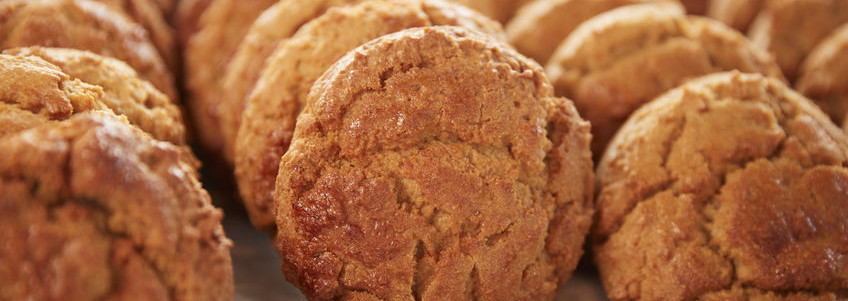
What works well in gluten-free cookies?
Protein: Dairy, soy, egg, and pulse protein can help make up for the missing gluten. Soybean and egg proteins help with gel-forming, while soy or whey improves the characteristics of rice flour.
Hydrocolloids: They help with thickening, foam formation/stabilization, emulsion modification, syneresis reduction and shelf life extension.
Konjac: This is a water-soluble polysaccharide. With 0.4% konjac flour, texture and overall quality of gluten-free cookies greatly increases.
Transglutaminase: It results in increased moisture content and spread ratio but decreases hardness values.
Pre-gelatinized starch: Improves viscosity and increases volume. Along with chemical leavening, it provides the carbon dioxide that expands during heating, creating larger air bubbles.
What flours work best?
Since you can’t use wheat flour in gluten-free cookies, try these substitutes:
- Rice flour is well accepted and one of the most used cereal flours for the production of gluten-free products due to its bland taste, white color, high digestibility, and hypoallergenic properties.
- Oat flour is high in fiber, essential amino acids, unsaturated fatty acids, vitamins, minerals and bioactive compounds. Long-term clinical studies on treated celiac adults with a daily intake of a median of 20 g of oats showed no damage in small-bowel mucosal villous, inflammation, or gastrointestinal symptoms.
- Maize flour
- Sorghum flour
- Millet flour
- Teff flour
- Starches (non-wheat)

